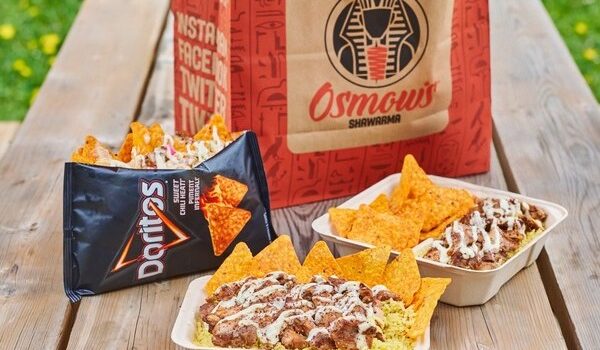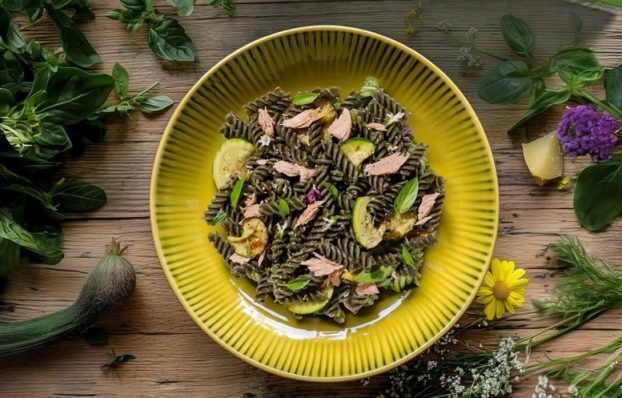If you were asked which product Kraft Foods, the world’s second largest food and bev co., would identify as its signature brand, you might think of KD, or Singles. If given a further clue that the answer doesn’t involve J.R.’s famous cheddar, your thoughts might turn to some of the megabrands built by the companies that have folded into Kraft over its 100+ years – Oscar Mayer’s jingle king wieners, General Foods’ Jell-O, Nabisco’s Ritz crackers or Oreos, which became some of those good cookies Mr. Christie makes.
All good guesses. But in terms of a signature product that signals where Kraft is headed, the answer, according to Kraft Canada president Dino Bianco, is Tassimo. And no, it’s not a new biscuit.
Launching in Canada mid-May, Tassimo is Kraft’s first kitchen appliance entry, and more importantly, this $199 single-cup ‘hot beverage system’ embodies the new post-restructure going-to-market model for Kraft Canada.
Tassimo is a global Kraft Foods initiative, first launched in France in 2004, later hitting Switzerland and the U.K. before coming to Germany and the U.S. in September. It was based on recognizing that the old way of making coffee wasn’t meeting consumer needs – who needs a whole pot of coffee anymore, or wants to wait while it brews for that matter? And when Kraft hit upon a method that was faster – they partnered up with Germany-based Braun, a P&G subsidiary, on a proprietary solution system. The patented technology ensures that the discs you pop in the machine to make coffee, cappuccino, espresso, tea or hot chocolate are only produced by Kraft, while the unit itself is produced and distributed by Braun.
This is significant for Kraft, according to Bianco, who stepped into the presidency in November, because it indicates a new openness in terms of ideas and approaches for Kraft Canada. ‘The traditional model of ‘we make it, we produce it’ is changing; we’re becoming less insular,’ says Bianco, both in terms of working more globally within the company, and partnering outside.
It also plays well into areas Kraft has identified as major societal shifts driving strategy going forward, as it’s based on both boomer- and convenience-focused consumer insights. And it indicates the new behavioural mindset of Kraft itself – more risk taking.
On the communications front, Kraft Hockeyville signals the way Kraft is approaching marketing: big, ownable, integrated ideas. Kraft Hockeyville is a contest to find the town that exemplifies hockey spirit, chronicled in a TV series on CBC. The seven-ep, hour-long show debuted March 29, and at the end of the series’ run in June, the winning Canuck community will net $50,000 from the Home Depot for its arena, plus $10,000 in equipment from CCM/Reebok. And oh yeah, the town crowned Hockeyville, as voted by CBC viewers, gets to host a live exhibition game between two Canadian NHL teams.
Off-air, the ramp-up to Hockeyville scored at retail. Bianco says the program has already hit its goal by creating buzz and connecting with consumers across multiple touchpoints. On the website there’s evidence of community engagement, from letters from mayors, to a pic of hundreds of people forming the words Kraft Hockeyville. This initiative, with its 360 deployment and wider partnering, is the kind of program Bianco plans to do more of. ‘We don’t want to do ‘me too’ type marketing promotions that anybody can replicate. So we’re working on what the next Hockeyville is.’
Integration and engagement have also been stepped up on the CRM front recently, as Kraft’s what’s cooking mag and site initiatives are now linked to TV campaigns and in-store promos and mini-mags.
Charting the path ahead on a broader scale, the thrust is to deliver consumer value, and increase sales. Northfield, Ill.-based Kraft Foods has been faced with competition from store brands and rising commodity costs, which have taken a toll on performance, and sparked criticism that the company has not been innovative enough and that its brands need more support. ‘Maybe we’ve relied on heritage too much,’ says Bianco, adding that the focus now is on looking at every aspect of the consumer value equation, from pricing, to packaging and supporting products.
Late last year, Kraft Canada’s operation was hit by ongoing global downsizing, losing about 100 positions across Canada, and it was called upon to work more closely with Kraft in the U.S. to realize North American structural efficiencies. ‘We lost 5,500 worldwide back in 2004 across all functions,’ explains Bianco referring to the three-year long process, ‘and we recently announced 8,000 in February over the next three years, globally as well, across
all functions.
‘Kraft is known as a bit of a bureaucratic organization and we tried to streamline processes by reducing some levels,’ says Bianco, referring to the pre-Christmas staff reduction and realignment with the U.S. As a leader, Bianco says his immediate focus has been on lifting the malaise it caused.
Kraft has around 6,000 employees across Canada, and about 150 of those are marketers based in Kraft’s Toronto HQ. Prior to leading the troops (taking over from Fred Schaeffer who moved to McCain Foods Canada as CEO), Bianco spent two years as VP for the beverage and grocery sector. He joined Kraft in 1990 as a finance manager, and has since broadened his CA roots with stints in sales, strategy and marketing, including leading a company wide redesign of Kraft’s sales and customer strategies.
Since the New Year, Bianco has focused on communicating to staff the advantages of a closer relationship with U.S. and global counterparts. ‘It’s about continuing to push the message of our remit – the Canadian marketing responsibility – and reinforcing that there’s always a need for Canadian marketing.’ Bianco says the malaise is lifting, and that a contributing factor has been the recognition of a new nimbleness, people experiencing first hand that they don’t need a 30 page deck to present an idea.
Strategy sat down with Bianco in the Kraft kitchen, to see what else is up.
How has the new North American operating model changed things here?
The needs of the Canadian consumer continues to be the responsibility of Kraft Canada. We have Kraft Canada P&Ls, Kraft Canada media budgets, and it continues to be that much of the responsibility and accountability and the decision making that ties into that, resides in this building. There’s obviously a greater opportunity to link into a North American and global structure as it relates to resources, ideas, innovation, and major platforms or initiatives. Kraft Canada has always been a steady grower, in the middle of the pack, and I think this restructure will allow us to really be a top-tier grower with respect to the amount of investment that comes into this country, and that is up this year.
So you’re making a greater investment in innovation. What percentage this year?
We’re going to be up over 20% in support for our businesses. It’s across all elements, but Tassimo is a big play for us this year. It’s a perfect example of taking a global idea and tailoring it by market. The essential bundle is the same, but what becomes unique, where the local investment is, is how it gets marketed, the brands that get used. We’re using Canadian brands like Nabob and Maxwell House to launch, we’re using local marketing with respect to PR, sampling – it’s really an experiential marketing program.
So is there any TV, or is it all grass?
We have a mass global TV campaign, but with less of a role than TV would normally play in a launch. Much more money is in going after our strategic value consumer where they are, whether it’s home shows or marquee events where we can demonstrate the technology and its benefits. It’s hard to bring it to life unless you can actually see it at work.
When you look at a global campaign, what influences what you run with here?
We continue to do consumer insight knowledge in Canada, so if the position of the brand and their needs are similar, then the campaign is going to work. Obviously there’s always a Quebec angle that we need to be sensitive to, and where the positioning in Canada is different, the campaigns are less transferable. An example of that is macaroni and cheese meals in the U.S. and KD in Canada – similar product, but different heritage, very different iconic representation in the market, therefore different support. It really depends on what Canadian consumer needs are similar to a North American consumer. Some of the brands have different positioning but Tassimo is an example of where convenience and technology transcend borders.
Are you going to be doing more border-transcending consumer appliances?
I think there is – and Roger Deromedi [CEO Kraft Foods] stated this – a desire to have more proprietary information. With any business, but particularly food, if you don’t have proprietary technology it can easily be replicated. So you’ll see more of our focus on proprietary technology and enablers across all areas, whether it be what the consumer sees, or the way we process things in our factories. We’re much more open to ideas – A, from a Canadian perspective, outside of Canada, and B, as an organization, from outside of Kraft. We’ve really set up an open innovation area in our company now to go after some of these ideas. In today’s competitive environment, you’d be foolish as an organization not to take great ideas, regardless of where they come from.
Anything new on the retail front?
We’re doing stuff on the supply-chain side, on how we spend our money with our customers so that we can get more benefit for them and really support our businesses. We’ve done a lot of shelving initiatives. There are some customers now that are putting Tassimo in the coffee section. Unheard of before, for a traditional grocery store to do solution selling.
What societal shifts are you focusing on most in terms of product development and communications planning strategy?
Health and wellness. We’ve taken an active role in this area. We have a fairly mainstream portfolio, and we’re trying to make sure it becomes more of a health and wellness play, whether it’s in reduction or elimination of TFA, which was a big initiative for us last year, or light versions of products. We launched a Sensible Solutions program that gives consumers assurance. Health and wellness is also a focus in the way that we advertise, making sure we promote active lifestyles.
We’ve never advertised to children under six, and now we’re not advertising to children under 12 unless it’s Sensible Solutions-based products. So it affects kids’ cereals, Jell-O, Kool-Aid. It’s a tough thing to say you can’t advertise to your core target so it forces the business to say: ‘How do we reformulate our product?’
The other trend that I think you will see more of is a demographic shift to 55+ and the emergence of that group as a real dominant player. They have different needs. Portioned size foods is one area, and we’re putting a big emphasis on easy open packaging, and large print. So that’s probably the other shift where you’ll see us continue to play a role.
Is convenience third on the list?
I think convenience is not mutually exclusive as it relates to health and wellness and 55+.
Is the pace of product launches increasing?
On a global basis we’re up at about $1.5 billion in revenue, which is almost a 50% increase over two years. It’s a tremendous focus globally. We used to do a lot of small ones, now we’re focusing on the bigger ones and increasing our revenue per launch.
We’re trying to launch more platforms. Our 2006 new product revenue and support will be above ’05. Tassimo is a big one. Another product that we’re pretty proud of and just launched in May is our Thinsations. It’s a Christie brand and leverages our Oreo, Chips Ahoy! and Honey Graham trademarks. They are individually packaged products that contain 100 calories per pack. It had tremendous success in the U.S. when it launched last year.
The other area we continue to push aggressively is the convenience side around our stick products. We’ve had tremendous success with Crystal Light and are looking forward to leveraging that on Kool-Aid. We’re really trying to create single serve convenience and the water bottle phenomenon has allowed us to do that, and take the product on the go. Kool-Aid sticks are launching in three flavors, and that’s a 30-calorie product.
As part of the North American team, and being more globally plugged in, will there be more Kraft Canada marketing crossing borders – like the recent Kraft Singles spot that got picked up for the States?
There might. There are areas where Canada will lead, and there are areas we’ll stand back a bit and let the US figure it out.
On the tremendous Kraft Singles campaign that JWT did for us, you’ve got a message that will work in any part of North America and we recognized that and leveraged it. The Philadelphia [cream cheese] angel campaign, which is global, was originally from Canada.
A perfect example of taking a global idea and executing it locally is the Maxwell House ‘Our House’ campaign. We did an execution in Canada which took us to the hockey rink. Filmed in English and French, we show how important the rink and the people in that rink are. So we were able to take a global campaign, shoot it in Canada based on the Canadian appeal, and it’s in the pool of global campaigns – and if anyone wants to use it, it’s available.
I heard you recently tweaked the consumer path thinking on your CRM program.
I would say it’s an evolution. It’s about integrated marketing and taking our CRM capability, which we’re very proud of because Canada’s at the leading edge in this, and really driving it home in other areas, so it exists on the web, in the magazine and in e-mail and driving it home in Quebec through TV programs. We’re driving it in-store through promotions; whether we have a Believe campaign or what’s cooking mini-mags in store, it’s really surrounding the consumer with an integrated message.
In the past you’d see great CRM initiatives, and then you would have gone in-store and you would have seen a promotion for a blockbuster movie or Christmas trees – no connection. Now it’s a full connection. It’s really bringing it to the in-store environment and trying to create these ownable linkages back to our CRM program. And helping the consumer where they make a lot of the decisions by [offering] solutions.
When did that start?
We dabbled in it in ’05, trying to link some of our BBQing back to the Kraft Kitchen Experts. The big foray was in Festive ’05, around our Believe campaign, where we really stepped up our work in-store and also our TV advertising around it, and production of the mini-mag. And we’ve had phenomenal success with respect to the displays being up, movement of those products, and web hits from consumers who saw the displays in store.
We’re taking that model and also bringing it to Hockeyville, which is not necessarily a CRM initiative, but driving an ownable big idea on an integrated basis, in-store, on web, and on TV as a show, which is a unique angle. It’s up there with some of the best marketing any branded manufacturer could do in terms of how we’ve integrated Hockeyville with our partners the NHL, the NHLPA, Home Depot; it’s a 360 degree program that surrounds the consumer.
And it’s not just your normal retail channels.
Yes, Home Depot has come on board. We’ve also had tremendous retailer support at stores we might not have gotten support from before. Because at its genesis, is community engagement, and that resonates across the country. It’s the fact that it’s linked to hockey and that we’ve been involved in hockey for years. The program genesis and development, all resided within Canada. Jack Hewitt, our VP of consumer promotions strategy and alliances, started talking about the idea last year after our Making the Cut TV show, figuring out how we’d take it to the next level. We got some of our agencies involved and it’s been a phenomenal success.
How do you measure the success of something with so many components?
One way is stores, how many displays did we get up, compared to other programs. We track the sales of the product involved. We track web hits. We’ll track PR. Each element has its own way of tracking its success.
What would success look like for this?
We’ve essentially hit our goal. We wanted to establish ourselves as an innovative marketer. Hockeyville provided that, it’s the first time we’ve ever been involved as executive producer of a TV show. It’s been a great experience but a kind of stressful one as we’ve ventured into new territory. But it allows us to really connect with our consumers across multiple touchpoints. Our customers all are involved, and not just involved but passionately driving this. That alone has created success.
Three weeks before the show hit, for the first time, we’ve actually had to repurchase store displays because we’ve run out.
Are people stealing them?
They might be, we hope it’s because they’re going up in stores. I have a binder full of pictures from stores in small towns and big cities of the display involvement. It’s blown me away. We knew we had a good program, but to see it come to life and to see the rallying of communities, and the pride that they have in the community, and with hockey, is true Canadiana.
We’ve had people inquire from Taiwan and California, where there are Canadians playing hockey, saying we want to be involved.
We’ve had communities change their name; Golden B.C changed to Hockey B.C. The other thing that is springing to life is the charity side. Towns are raising money to fight cancer, or children’s diabetes, which is another great story.
So it’s social action, consumer generated media, the whole ball of wax.
The whole ball of wax. In my 16 years at Kraft, it’s certainly the biggest thing I’ve been part of.
What’s your biggest challenge now?
I think maybe we’ve relied too much on the heritage of some of our brands in the past, and either through reinvention of those brands, or bettering the quality of those brands, it’s refocusing and getting the consumer bundle right. We have to make sure our pricing is fair and support the brands and innovate.
We have gone from an organization that was delivering good results, but not great results, and this is not a Canadian thing, it’s a global thing. Kraft needs to step up in terms of delivering consumer value and therefore increasing our sales to top tier.
My biggest challenge is getting people energized. When we went through some of the change it created uncertainty and with uncertainty comes a bit of a malaise. But I think since the New Year we’ve really started to energize as an organization, recognizing how this new North American structure provides opportunity, either through a career point of view for those who have aspirations beyond Canada, or from a business point of view, recognizing the ability to tap into a much bigger organization.
How did you do that?
It’s about continuing to push the message that the Canadian organization is responsible for Canada’s needs. It’s not Chicago, it’s not New York, it’s not London. And it’s leadership, really setting the tone of an organization that is becoming less process oriented, more risk-taking. Some of the elements that were designed as part of the restructure that were viewed as threats at the beginning, now people are starting to realize: ‘Hey, I am in power to make this decision.’ You’re starting to see some of that change in operating behavior.
In terms of your brands, what is the signature product and what will it be in 2010? What typifies where you’re going?
Tassimo. It brings the idea of technology, the idea of proprietary, the idea of partnership, best of global, best of local, and a platform that can be expanded. It started as a coffee machine and is now a hot beverage system and there are opportunities to expand beyond that.
It focuses on convenience, it focuses on single-serve, it focuses on quality. It encapsulates a behavior that as an organization we want, which is risk-taking, the ability to get behind big ideas. So it’s really provided, in my mind, the model for how we need to go to market in the future and the types of products we need to launch.
Kraft Kitchen lore
While at Kraft, strategy was invited into the famous Kraft Kitchens, where nifty recipes are dreamed up and whipped up. Some of these end up on the website, as part of the huge database that enables an ingredient keyword search to spit out dinner plans. Some funnel into the what’s cooking magazine that is the backbone of Kraft’s CRM program, or in the e-recipes that a half million Canadians get weekly, and some make it to the backs of packages.
It’s a unique environment, a place where cheese slices are rigorously tested for grilling perfection (you watch out for shrinkage, and look for uniform melting), and a place where the numerous desserts in progress look like they should be photographed rather than wolfed. The concept began over 80 years ago, when JL Kraft hired a home economist to set up a test kitchen and brainstorm new product uses.
The show piece of the Toronto operation is Cecile’s Kitchen, named in honour of its past director, the late Cecile Girard-Hicks who spent 38 years helming the recipe think tank. The nearby little warren of kitchen/offices store some serious food acumen, and the Toronto gang is connected with Kraft Kitchens in England, Germany and Australia, as well as other culinary departments around the world, and reports into Chicago. In addition to packaging content, they work with marketing on their business.
Although the kitchen folk require a culinary background, creative flair and a passion for food, sometimes the recipe muses are fairly prosaic. Kraft Kitchens manager Maxine Karpel, who is also associate manager CRM, recently had a request from the marketing team for recipe ideas that involved frozen Cool Whip. She microwaved the problem away by throwing in some Baker’s chocolate squares and creating a sauce, and she also wondered: ‘What if you left it in the fridge overnight?’ What she discovered was chocolate that’s the perfect consistency for easy truffle-rolling. This, and other Cool Whip secrets, are revealed in what’s cooking, which is the ‘Number-one epicurean magazine in the world,’ of which a custom tailored version (kids, no kids, French, English) goes to two million homes in Canada five times a year.
Other things they know in the Kraft Kitchens:
* Moms can hold 15 recipes in their ‘mental repertoires’ (a Kraft term for our recipe RAM). Thus the need for helpful inspiration, in regular doses.
* Salt is the most common condiment, and there’s a higher preponderance of soy sauce in Quebec cupboards than in the rest of Canada. Every three years Kraft commissions a research company to do a Pantry Study, which is a 25 page mailed survey that 1,700 folks across Canada respond to. They have a big list of everything you might use in the kitchen, and ask if you have it on hand, are willing to buy, or not willing to buy. It covers equipment and appliances as well as ingredients. The end result is a deck sorted by region, family type and cooking level (new or advanced cook, kids or not, Quebec or ROC), and is a boon to their recipe formulation. They really do want to make things easy. MM























